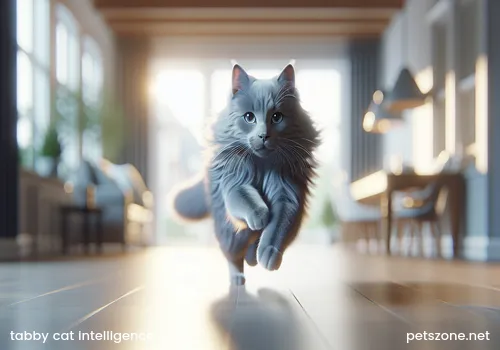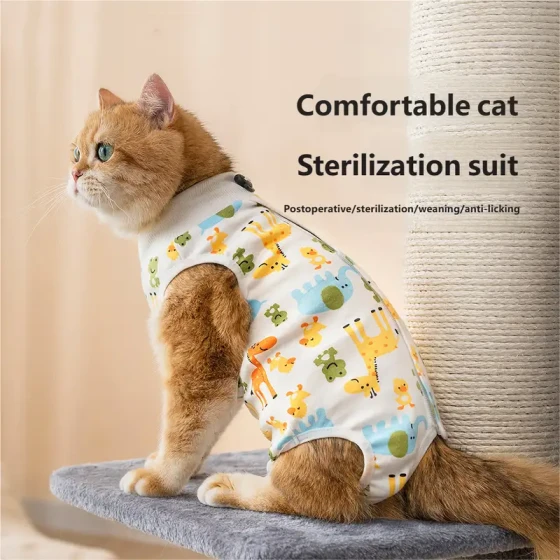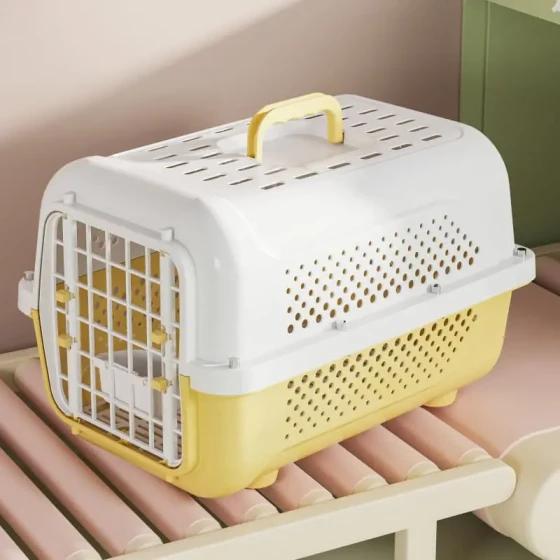Tabby Cat's Intelligence Equals How Many Human Years_A Revealing Look at Cat Brain Development
This question pops up from time to time on timelines, sparking intense debates among cat owners and various "my cat is super smart" anecdotes. To crudely and simply equate a cat’s, especially our native tabby cat’s intelligence to a certain human age is, well... how to say, somewhat a “dimensionality reduction attack,” while also revealing a naive anthropocentric idea.
First, we must clarify a major premise: intelligence of different species is fundamentally not within the same evaluation system.

This is like forcing the question “How old is a fish’s flying ability compared to a bird?” or “How old is a wrench's screw-turning ability compared to a screwdriver?” It sounds somewhat reasonable, but upon closer thought, it’s a mismatch. Humans and cats split on evolutionary paths millions of years ago, each lighting up different skill trees and developing unique intelligences adapted to their ecological niches.
Human intelligence excels in abstract thinking, logical reasoning, language and symbol systems, complex tool making and use, and large-scale social cooperation. We can gaze at the stars, ponder the origin of the universe, write code, and build skyscrapers.
Cat intelligence, on the other hand, is more manifested in perception, adaptation, survival, and hunting. They possess extremely sharp hearing, vision (especially low-light vision and dynamic tracking), smell, and exceptional balance and spatial orientation abilities. Their “intelligence” is optimized for efficiently hunting prey, avoiding predators, and reproducing in natural environments. Expecting a cat to solve advanced math problems is surely demanding the impossible; but when it comes to accurately locating and catching a tiny moving insect in a dim corner, most humans would probably admit defeat.
Therefore, directly mapping “human years” onto a cat’s intelligence is inevitably one-sided, even misleading.
However, when people ask this, they essentially seek a reference point to understand roughly to what extent a cat “understands.” Academia and popular science have indeed attempted some comparative studies, but they usually come with a large number of caveats.
Cat Cognitive Ability ≈ How Old in Human Years? An Imperfect Analogy
If we must find a reference point, the currently popular notion is that cats’ cognitive abilities, in some specific aspects, can be likened to that of a 2-3 year old human toddler.
This claim mainly comes from observations and research in several areas:
- Object Permanence: An important concept in cognitive psychology, referring to the understanding that objects continue to exist even when out of sight. Babies typically grasp this around 8-12 months. Much research shows cats also possess object permanence cognition. If you hide a toy under a blanket, the cat will know to paw under the blanket to retrieve it rather than assuming it vanished. This is indeed similar to behaviors of 1-2 year old toddlers.
- Basic Causal Understanding: Cats can understand some simple cause-effect relationships. For example, they know shaking the cat food bag means food is coming, pressing a certain button (like on an automatic feeder) releases food, scratching the door gets them let out, etc. This associative learning ability is crucial in early development of human toddlers as well.
- Problem-Solving Ability: To reach a goal (such as getting a snack from a high place or opening a cabinet), cats try and explore, showing some problem-solving abilities. Although limited in complexity, this trial-and-error and goal-oriented behavior is common in 2-3 year old children. After all, whose cat hasn’t figured out how to open a door or steal a snack? (jokingly)
- Emotional Perception and Attachment: Cats can recognize their owner’s emotions (happy, angry, sad) and form deep attachments to primary caretakers, seeking comfort and companionship. This social-emotional development is also a core part of human infant development.
But! Pay attention! This analogy has major limitations!
- Differences in Perceptual Worlds: Cats’ sensory world is drastically different from humans. They rely on smell and hearing to obtain information that may far exceed what we can imagine. We cannot experience the complex world they build through scent marking and subtle sounds.
- Lack of Higher Cognition: In areas like abstract thinking, symbolic understanding (e.g., language), complex logical reasoning, and future planning, cats have a vast gap compared to human toddlers or even older humans. Their world tends to be very “here and now,” with limited comprehension of complex concepts.
- Different Motivations and Needs: Cats’ behavioral logic mainly revolves around survival instincts (eating, drinking, safety, reproduction, hunting drive). Many seemingly “smart” behaviors are driven by very primal and direct underlying motivations rather than complex thinking.
So, the “2-3 years old” comparison is just for reference, no need to take it too seriously. At most, it only represents a very small piece of the puzzle of a cat’s intelligence, far from the complete picture.
Revealing the Cat Brain: Hardware Foundations Determine Software Limits
Understanding cat intelligence requires starting from their “hardware”—the brain.
The structure of the cat brain is broadly similar to mammals including humans, with basic structures like the cerebral cortex, cerebellum, and brainstem. Although the cat’s cerebral cortex does not have the extensive folds and large surface area like humans’, it is relatively well developed compared to their body size, responsible for processing sensory information, controlling voluntary movement, and some relatively advanced cognitive functions.
According to some data (exact numbers may vary depending on research and measurement methods; this is a rough range), the cat cerebral cortex contains about 300 million neurons, while the human cerebral cortex has approximately 16 billion neurons. This magnitude difference is one physiological basis for cognitive ability gaps between species.
Cat brain development process is also very interesting:
- Early Development: Newborn kittens have brains that are not fully developed; senses (vision, hearing) are also not fully active. The first few weeks are a critical period for rapid neural development and connection building. Environmental stimuli during this phase (mother cat’s grooming, interactions with littermates, environmental richness) are crucial for later cognitive and social development. It’s somewhat like the human infant stage where early education and environment are vitally important.
- Socialization Window: Usually from 2 to 7 weeks (some say up to 14 weeks), is the golden period for kitten socialization. Exposure to humans, other animals, and diverse environments during this phase helps them develop good temperament and adaptability, reducing future behavioral problems. Missing this window may cause kittens to become shy, fearful of people, or poorly adapt to home life.
- Maturity: Around 1 year old, cats mature physiologically and behaviorally. Although brain plasticity exists throughout life, the primary structures and functions are largely developed by then.
It’s worth noting, although cats’ brains have fewer neurons and less cortical complexity compared to humans, certain areas—such as those processing vision, hearing, and balance—might have more efficient or specialized capabilities than humans. This again supports the idea that “intelligence is adaptability”—hardware configuration meets specific “software needs.”
Regarding the Intelligence of "Tabby Cats"
Now, let’s return to the specific topic of “tabby cats.”
Tabby cats, as native natural cat breeds, have not undergone long-term, directed artificial breeding like many purebred cats. They have evolved more through “scrapping and struggling” on the margins of natural environments and human settlements. This “free-range” background gives tabby cats some distinctive features:
- Strong adaptability: They can survive in various environments, often showing strong ability to find food and shelter.
- Prominent hunting instincts: Retain strong predatory nature, agile and skilled mouse catchers.
- Relatively independent: Possibly less clingy than some highly human-dependent breeds (though individual differences are large).
So, are tabby cats “smarter” than other cats?
This question is difficult to answer. Currently, there is a lack of rigorous, large-scale, standardized intelligence testing research comparing different cat breeds. The reasons include:
- Intelligence is hard to define and measure uniformly: As mentioned, it is inherently difficult to quantify cat “intelligence,” and designing a fair, universal test is even harder.
- Huge individual differences: Within the same breed, even inside one litter, intelligence can vary widely. This is affected by genetics, early experiences, nutrition, health, living environment, and multiple factors.
- Environment shapes behavior: The “survival wisdom” shown by tabby cats is largely a result of environmental pressure. A well-cared-for purebred cat that has everything provided may not show the same “wild survival skills,” but that doesn’t necessarily mean it is inferior in other cognitive tasks.
Instead of fixating on whether tabby cats are “smarter,” it’s better to appreciate their unique adaptability and strong vitality. This practical wisdom shaped under natural selection is worthy of respect. They may not excel at human-designed intelligence games, but when it comes to understanding natural rules and adapting to environmental changes, they likely have their own “survival philosophy.”
How to Get Along with Our "Alien-like" Cat Masters?
What insights can we gain from understanding the uniqueness and limits of cat intelligence?
- Let go of unrealistic expectations: Don’t expect cats to fully understand your lengthy speeches or follow complex commands as dogs do. Their cognitive framework differs from ours. Acknowledging this reduces unnecessary frustration.
- Respect their nature: Cats need to scratch, climb, hide, and simulate hunting. Providing scratching posts, cat trees, teaser toys, and food puzzle toys to meet their instinctual needs improves their quality of life (and protects your furniture).
- Leverage their learning ability: Cats are not untrainable. Using positive reinforcement (treats, petting, praise), you can teach them to use the litter box, not scratch the sofa, or even perform simple tricks (like sit, shake hands). Patience, consistency, and finding their favorite “currency” (often food) are key.
- Observe and understand their communication: Cats communicate through meows, purring, tail posture, ear orientation, body language, and more. Learning “cat language” to understand their needs and emotions is the foundation for a good human-cat relationship. Stop interpreting their behavior solely with human logic; try seeing things from a cat’s perspective.
- Provide a rich environment: In a dull environment, even the smartest cat can become dull-witted. Provide toys, "cat TV" by the window, safe outdoor exploration opportunities (if conditions allow and safety is ensured), keeping the environment fresh and stimulating helps maintain their cognitive vitality.
In summary, rather than obsessing over how many human years a tabby cat’s intelligence equals, dive deeper into understanding the unique cognitive world of cats as a species. They are not “smaller humans” but fascinating creatures sharing our planet, possessing independent intelligence and perception.
Appreciate their agility, marvel at their perception, understand their limitations, then lovingly serve your sometimes aloof, sometimes clingy, logically unique cat master. After all, being chosen by such an independent and mysterious creature as their “roommate” and “long-term food supplier” is itself a wonderful fate, isn’t it?



